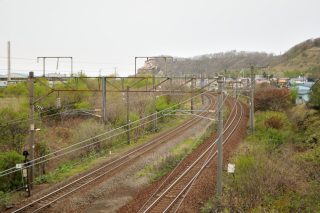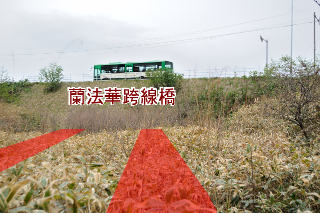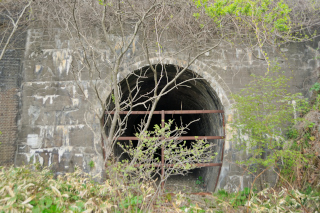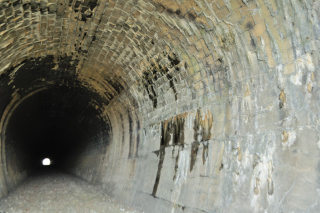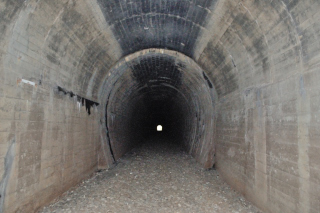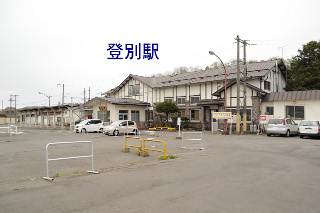
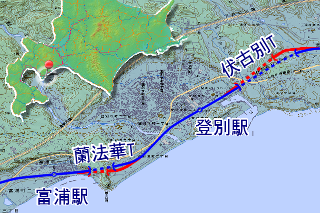
Previously I have gone to Fushikobetsu tunnels (伏古別トンネル) between Noboribetsu station (登別駅, noboribetu eki) and Kojohama station (虎杖浜駅, kojōhama eki) on Muroran main line (室蘭本線, muroran honsen). Noboribetsu station is sandwiched between the tunnel, Ranpokke tunnels (蘭法華トンネル) set in another direction of Fushikobetsu tunnel. It’s a bit short, , I went to here. Start is Noboribetsu station. It’s one of the Muroran main line that opened early in Hokkaido prefecture(北海道, hokkaidō), and nice appearance of station building which have welcomed visitor to spa since 1935.
Another direction of Fushikobetsu tunnel from Noboribetsu station, the tunnel there is in Cape Ranpokke (蘭法華岬, ranpokke misaki) pop out to the Pacific Ocean.
By the way, Ranpokke sounds strange for Japanese.
Until 1931, Tomiura area (富浦) behind cape called ran-pok (ランポク) or ran-pok-ke (ランポッケ) . It means “under slope” or “under slope place” in Ainu language. It’s a relic that is the era of the no tunnel, climb and down the steep slope in the cape by walk.
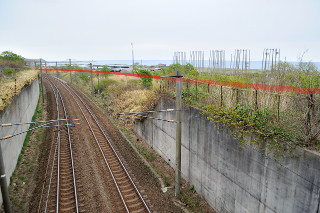
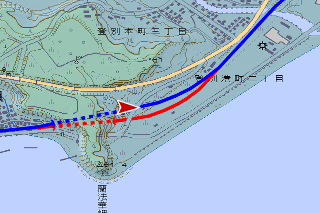
The old line branches this side of the tunnels.
The old line pass under the old national road. The overbridge is drawn in the topographic map, but this bridge was removed already.
This bridge named Ranpokke overbridge (蘭法華跨線橋, ranpokke kosenkyō) was built in 1932. It was a rare bridge cause semi-through girder and skew bridge.
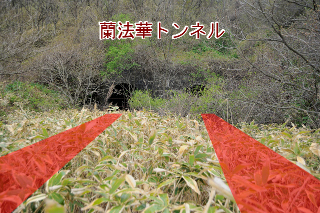
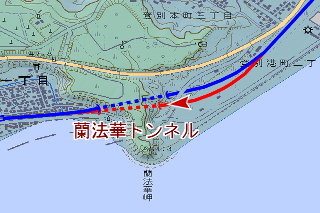
Ranpokke tunnels there is behind bamboo grasses and trees.
It near from road comparatively but hidden by trees, so I think drivers are hard to notice the tunnels.
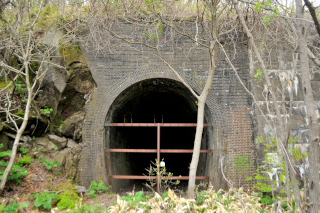
Pictures line up like stereopsis from here.
the left picture is sea side, inbound. the right is mountain side, outbound. Muroran main line (At the time called Hokkaido tanko tetudo Muroran line (北海道炭鉱鉄道室蘭線) ) opened on August 1st, 1892. At the time it used left brick tunnel only, because Muroran line at the time was single-track.
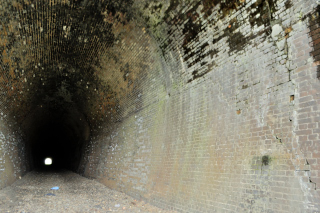
Era single-track, Ranpokke tunnel start construction on November 6th, 1890, it’s same day of Fushikobetsu tunnel, completion on December 20th, 1891. Long Fushikobetsu tunnel completion February 18th, 1892 with a delay.
This line is important line because it connecting the coal mine and port, so change to double-track was early, this tunnel was completed on July 10th, 1926. Fushikobetsu tunnel about 2 weeks with a delay. Why Fushikobetsu built with brick, meanwhile Ranpokke built with concrete? Details unknown because there is no material of at that time.
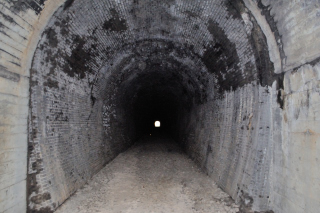
I looked back at Noboribetsu direction at near Tomiura side mouth. Both tunnel change cross sections, and material change to concrete.
later here shed added. It was completion on August 12nd, 1963 by the nameplate.
Shed part, inbound has window and I can see the ocean behind the road.
It is filled wire mesh, but many places broken, and countless footprints cover inside of tunnel ground. Mud and fallen leaves have accumulated outside of the mesh
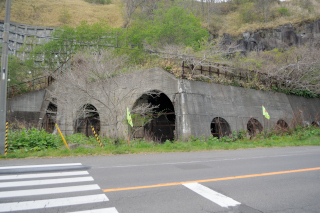

Tomiura side mouth.
From this side, old inbound, old outbound, current.
The current Ranpokke tunnel is double-track built according to electrification, opned June 23rd, 1980.
Now NATM supports many tunnels, but it’s first NATM tunnel in Hokkaido.
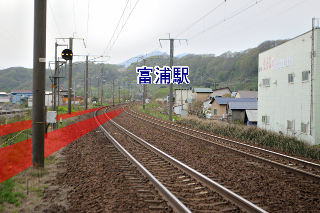
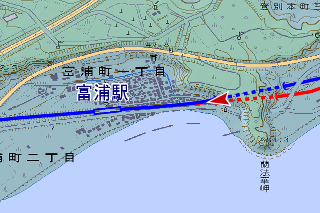
The old line joins current line, and It soon arrives Tomiura station.
Infomation of this entry
Related entrys
Major points maps
References
- 札幌鉄道管理局営業部旅客課長 池田晴男(編輯)、『北海道 駅名の起源』、日本国有鉄道、1962年
- 日本国有鉄道札幌工事局70年史編集委員会(編)、『札幌工事局七十年史』、日本国有鉄道札幌工事局、1977年
- 日本国有鉄道北海道総局、『北海道鉄道百年史 上巻』、日本国有鉄道北海道総局、1976年
- 日本国有鉄道北海道総局、『北海道鉄道百年史 下巻』、日本国有鉄道北海道総局、1981年
Change logs
- 2016-03-13 地名のミス・脱字修正

